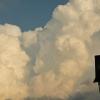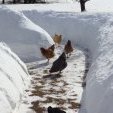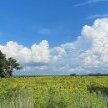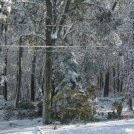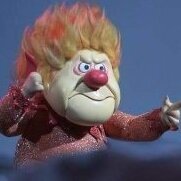All Activity
- Past hour
-
Looks like we may finally get AOA normal today. Ready for it.
-
Hope so, but I think we’re in for more of the same. Hopefully there’s no early freeze up here this September.
-
The most important factor for our area is how strong the Northern Stream of the Pacific Jet has been since 2018-2019. So this has found ways to overpower what has been favorable teleconnection patterns in the past. This is why we have experienced the lowest 7 year winter snowfall average on record for many spots from Philly to Boston. Last winter featured what would have been considered favorable teleconnections in the past for snow. Just looking at the seasonal 500mb map, you could make the assumption that it could have been a snowy winter from the means. But on the 11 days NYC had their heaviest precipitation of .25 or more the average temperature was 41° degrees and a strong Southeast Ridge. So the storm track was too warm even if the background temperature of 34.8° was much colder. So the only metric I am interested in at this point for next winter is where the storm track sets up. If it continues the Great Lakes cutter, I-78 to I-84 hugger, and suppressed Southern Stream storm tracks, then it won’t matter what kind of poleward extension we get with the ridge near Alaska. This has been the dominant storm track with the record Northern Stream of the Pacific Jet. If we get to December and the storm track is still unfavorable, then we’ll know that it will be another well below average winter for snowfall. Hoping to see some improvement in this department. We will know soon enough by December when we get the early La Niña snowfall indicator which has worked nearly all of the time since the 1990s like it did last winter. Last December was below 4” and the rest of the winter finished well below average again. But with the record mid-latitude warmth we are currently experiencing, it would tend to support the Southeast Ridge and strong PacificJet being a factor again. Don’t mind warm winters as long as the storm tracks that are cold like we got in 15-16, 16-17, and 17-18. But there is very little we can do with a warm storm track.
-
We pray
-
Low of 54. Ridgely and Goldsboro mesonet stations recorded lows of 53 and 52 respectively
-
Septorcher coming it seems
-
Another summer day.
- Today
-
June was boring, but the last several weeks have been one of our most interesting summer stretches in years. The recent break has been nice, although it has remained somewhat humid. That is finally over at about 9am this morning when the strong front moves through.
-
Really comfortable pattern here the rest of the month as the next heatwave will miss well to out north with record mid 90s staying up near the tundra. This should be one of the more extreme late season over the top warm ups we have seen. Unfortunately, it will promote more drought and wildfire activity up in Canada.
-
Same here, but I think it's drought rather than coolness.
-
60 for the low.
-
The amount of flat out false info circulating around wxtwitter is simply amazing. Just read a tweet claiming that we are at “solar minimum” which isn’t even close to being true. You really have to be careful who you follow on there
-
53.0°
-
That’s exactly the problem….our starting point at the very beginning of this arctic sea ice melt season was record low so we ended up with yet another record low year for 2025
-
Summerish morning 60/54.
-
That "taste of fall" next week will even be felt in Phoenix...lol Wednesday A 40 percent chance of showers and thunderstorms. Partly sunny, with a high near 97. East southeast wind around 5 mph becoming west southwest in the afternoon.
-
Low Pressure Lunacy started following INVEST 99L FORMED: (40/50)
-
all that excess water vapor is nasty, we could really put it to use by converting it to drinking water, there are devices already available that can do this
-
Maybe he appreciates lower heating costs or it could also be that we're coming to the realization that we've already experienced the coldest and snowiest winters we are likely to ever experience in our entire lives and anything from this point on is gravy. For me it's both 1 and 2, but I will say I still get really upset when a big snowstorm busts, a la March 2001 or January 2008. It's much easier to handle a mild winter with no snowfall threats at all than a mediocre winter with predicted snowstorms that don't pan out.
-
eerie similarities between 2001 Erin which was active on 9/11 and this one:
-
Went to the Thomas Rhett concert at Jiffy Lube Live tonight - gorgeous weather and a fantastic concert!
-
To be fair, the drama this week has me reading everyone’s posts during an otherwise slow stretch of weather.
-
Last 90 F (or higher) reading at NYC in the period 1970 to 2024 Aug 10 or earlier __ 1975 (Aug 5th), 1981 (Aug 10th), 1982 (07-27), 1986 (07-26)^ 1999 (Aug 5th), 2000 (Aug 9th), 2001 (10th), 2006 (3rd), 2007 (8th), 2011 (8th), Aug 11-15 _________ 1988 (15th), 1994 (14th) Aug 16-20 ________ 1984 (16th), 1987 (18th), 1997 (17th), 2009 (19th), Aug 21-25 ________ 1974 (24th), 1976 (23rd), 1978 (24th), 1996 (23rd), 2003 (22nd), Aug 26-31 ________ 1990 (27th), 1992 (26th), 2004 (28th), 2020 (27th), 2021 (27th), 2024 (28th) Sep 1-5 ___________ 1973 (4th), 1977 (3rd), 1979 (4th), 2008 (4th), 2012 (1st), 2022 (4th) Sep 6-10 __________ 1971 (9th), 1985 (6th), 1998 (6th), 2002 (10th), 2010 (8th), 2014 (6th), 2015 (9th), 2016 (10th), 2018 (6th), 2023 (8th), Sep 11-15 __________ 1989 (11th), 1993 (15th), 1995 (14th), 2005 (13th), 2013 (11th), Sep 16 or later _____1970 (26th), 1972 (17th), 1980 (22nd), 1983 (20th), 1991 (17th), 2017 (24th), 2019 (Oct 2nd) _____________ ^ 1986 had 89F on Sep 30. Median is Sep 1, average of 55 days is Aug 30. (for 1991-2024 median is Sep 2.5 and the average is Sep 2) There is a 50-50 chance of last 90 being before or after Labor Day weekend in the recent data and even way back, 47 of the 101 years not in the above list had a 90 in Sep or Oct, including every year 1936 to 1946, three of which were in October (1938, 1939, 1941). 1947 had a very warm autumn too but its September max was 89F. Despite that, the average high from Aug 31 to Sep 19 was 84F and October 1947 was warmest on record. I believe it was a bad season for forest fires in the eastern U.S.

